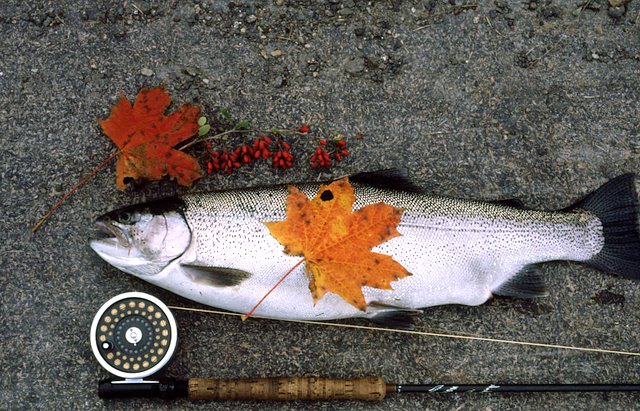
| Home | About Us | Vintjärn | Flies and Fishing | Friends |
RAINBOW TROUT

It is considered that all rainbow trout were originally migratory. From rivers in North America they migrated to The Pacific, fattened up during a year or two, then returned to sweet water in order to secure the next generation. This migration was well known to the natives, who could complement their food supply with great catches of rainbows from the rivers.

The rainbow came to Sweden as eye dotted roe at the beginning of the 1890’s thanks to a country squire, Conrad Hammarström. Just before the turn of the century, his initiative made it possible to stock Swedish produced rainbows in about a hundred lakes. The disappointment was great when the fish did not reproduce.
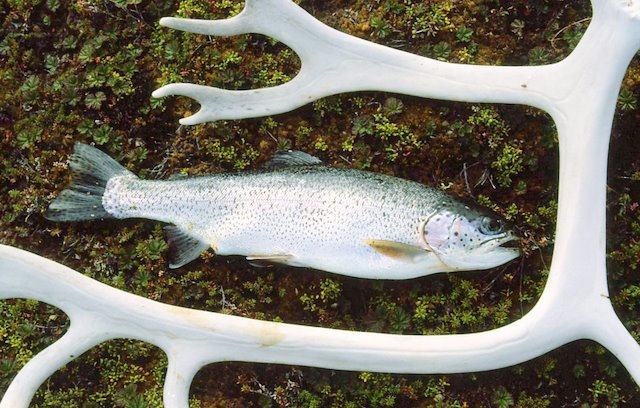
Despite unfavorable conditions, rainbow trout occasionally succeed to reproduce even in Scandinavian waters. The fish in the picture is a descendant of rainbows stocked many years ago in a Norwegian mountain lake. A happy combination of water quality and temperature contribute to the production of new generations of perky rainbows.

Innumerable lakes, of lesser interest from a fisherman’s point of view, have since the middle of the last century, been treated with Rotenon in order to give room for fast growing rainbows. “Put-and- Take” has become a common concept, i.e. the fish is put into the water only to be taken again. Critics sometimes complain that an exotic fish, not natural to our fauna, replaces pike and perch.
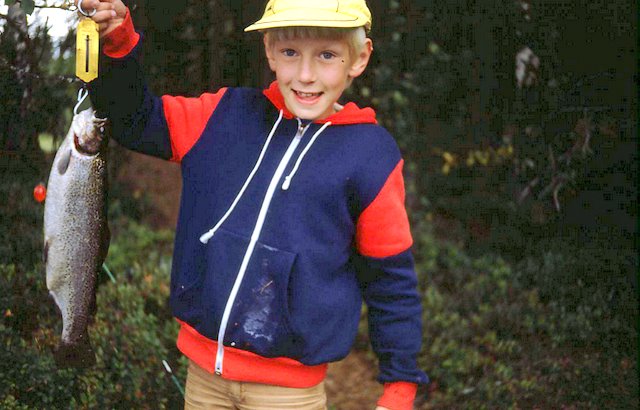
The introduction of rainbow into our waters has indeed given us opportunities to enjoy our sport, mostly within reasonable distance. It is a kind of fishing enjoyed by all, young and old, whether spinning, fly-casting or fishing with a simple pole. I took this picture many yeas ago. I don’t know who you are, but you had just caught your first rainbow. Do you still enjoy fishing?
| When sport fishing got started in the US, it became common to stock the migrating rainbow in waters lacking connection with the sea. The fish quickly adapted and although landlocked became self-reproducing on both American continents. Nowadays it is possible to fish for rainbows in Africa as well as Australia and Asia. Picture shows a wild rainbow caught in a small mountain stream in New Zealand. |
|
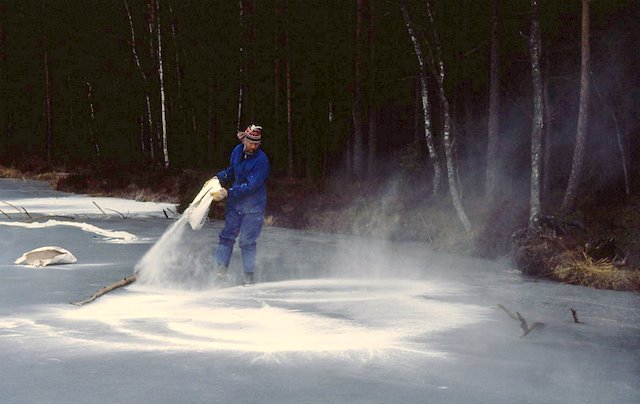
In many parts of our country, fishing clubs lease waters for their own use, with focus on rainbow. Managing your own water demands time and effort, and not least, money. Parts of Sweden resting on bedrock are particularly sensitive to acid causing substances, and liming is necessary in many parts in order to maintain the Ph-balance.
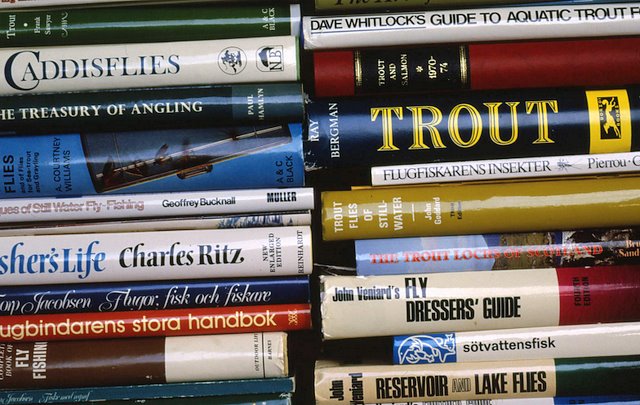
After a long winter, the fly-fisher is armed to the teeth. Leaders are tied, lines spliced, reels cleaned, flies have been tied and fishing magazines and books read. Conversations over the phone with friends with a mutual interest have contributed with additional wisdom. Following such preparation, a fish with its pea-sized brain, should not stand a chance. The problem is, of course, that fish neither think or react like a human being.
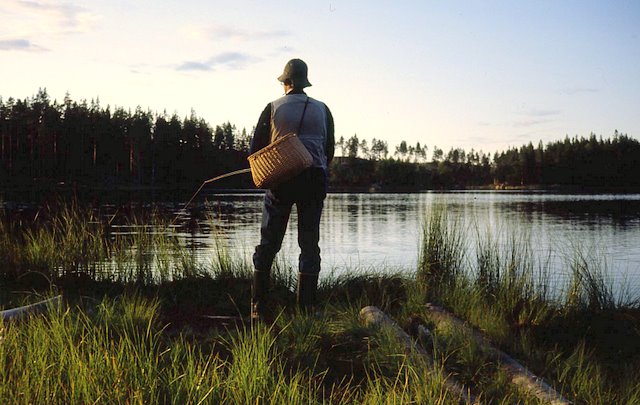
The ice has finally given way. Last year’s brown grass crackles at your feet, a blackbird sings under a pale blue sky, and a pleasant earthy smell rises from marshes. Nature slowly comes alive after the long rest. The lake is like a mirror with no fish denting the surface. The rainbow is there, but a few newly hatched midges are not enough to lure it to the surface.
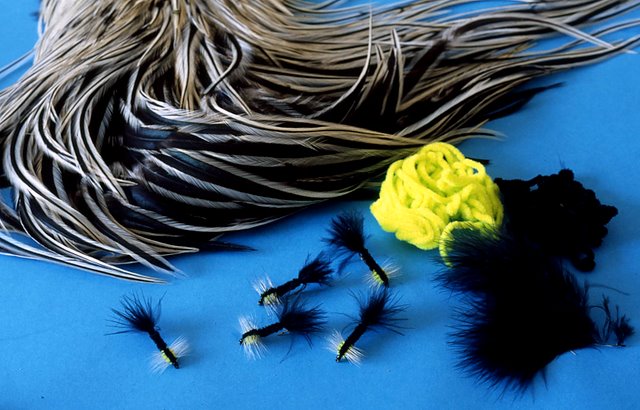
Which fly? Unless you are a strong believer in exact imitations, the field is open for experiments. The Montana nymph has a well-established reputation as a rainbow fly, especially the Hökensås variety with a profuse Marabou tail and badger hackle. The hackle is usually cut flat underneath as opposed to the American model, where the hackle is left as is.
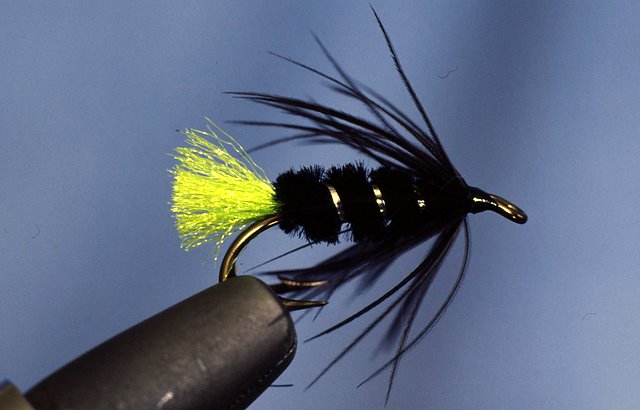
At British reservoirs, where
Put-and-Take fishing has a long tradition, flies with a combination of black and
lime green have proven attractive to fish. In this picture, a fly, which I
sometimes tie on a double hook in order to add weight and stabilize the motion
of the fly. A soft hen-hackle gives the fly a life-like appearance.

A rainbow spawns in spring and performs the reproducing ritual, even though the eggs seldom have a chance to hatch. Fear is no longer there, and one may sometimes see females, swollen with roe, pulling a string of courting cock fish close to your waders. Picture shows a wintered rainbow, which after months under the ice has taken on a darker nuance.
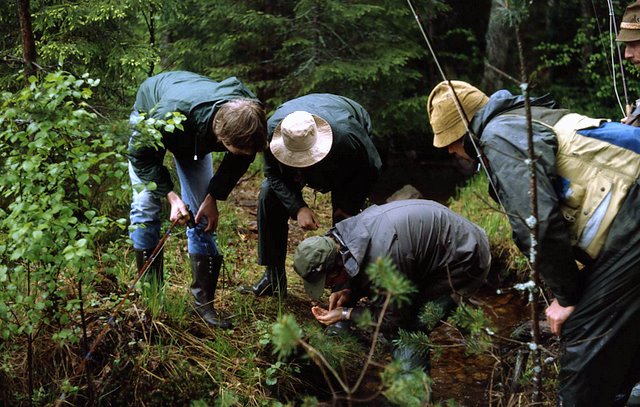
Insect life gets started along with the warmer weather and longer days. The first mayflies appear, and an occasional rising fish breaks the surface. In our delight over spotting rings on the water, we tend to forget that the rainbow finds most of its food under the surface. If you sift bottom material through a fine net, or turn over stones near the bank, you will find a teeming of insects in their early stages of development.
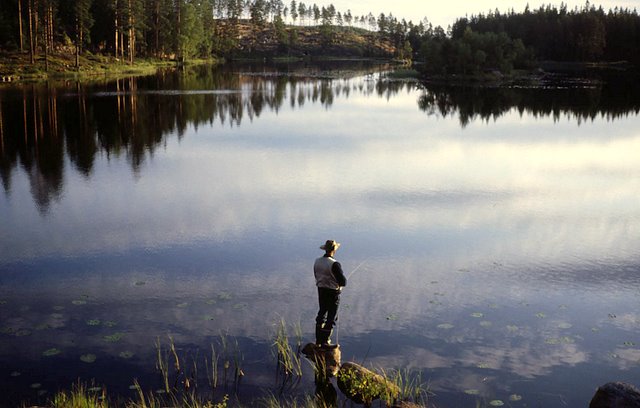
Midges
are probably the most important food all through the season. The midge pupae,
when hanging on the surface film, are of special interest to the fly-fisher. The
imitation is handled carefully on a thin leader, when the fish slowly, almost
indolently plows ahead among hundreds of twitching pupae. It is a game of
patience – to say the least.

The hatch usually takes place in the evening. Quickly, if the water surface is mottled, more slowly when the water is calm and the pupae struggles to get through the molecular roof of the surface film. In the picture, a “Footballer” with a body of alternating dark and light hairs from a moose goatee, one of many imitations representing the midge pupae. However, we probably won’t create a truly illusionary imitation until we invent a wholly transparent fly hook.

Lures belong in every fly fisher's arsenal unless for personal reasons you want to limit yourself to imitations only. You don't have to justify your choice of fly insisting that Mickey Finn imitates a minnow or Woolly Bugger a leach. Here a "soft streamer" with supple hackle tips and fluffy fur entwined in a tying thread loop. All to give life and motion to the fly.

Lures became popular along with reservoir fishing during the postwar era in England. Many new patterns were introduced through fishing magazines and books. They glittered like pop-stars for a few seasons, but by and by faded away and were forgotten. A handful patterns survived and over the years have become classics. Fishermen by the thousands use them for the simple reason that they catch fish and do so season upon season.
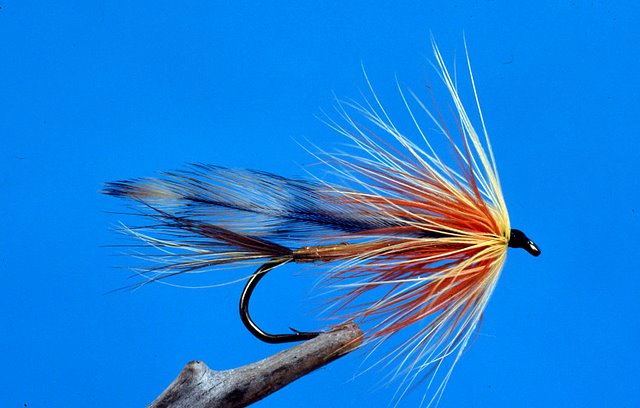
There is a famous photograph of Geronimo, the Apache chief, who all through life fought for the independence of his people. His long hair, parted in the middle, an intense look and the mouth like a straight line in his broad face. The picture of a man who never gave up. Geronimo’s name lives on, not in the history books alone, but also as the name of a streamer with good reputation in the US. A true classic!

After a period of adjustment, the newly stocked rainbow quickly becomes selective in his eating habits. Sometimes, nothing offered at the end of a leader is good enough. At other times, it may act most irrationally. I have seen rainbows, repeatedly attack an angler’s plastic float in an attempt to get a grip on the elusive surface, while my neatly tied dry fly is completely ignored. Definitively not good for my ego!
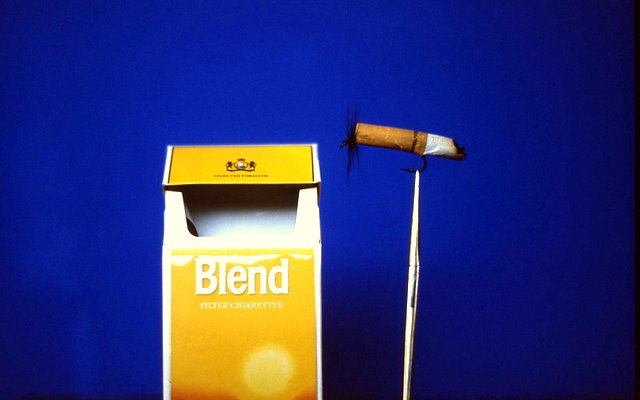
Counted to the irrational behavior of the rainbow is this inconceivable love for filter tip cigarettes – any brand. I have, on several occasions found filter tips in stomachs of rainbows. Yes, one rainbow was so full of these stubs that the entire fish felt “lumpy” when lifted from the net. So please, don’t throw your cigarette butts in the water – the filter clogs the digestive system and leads to death from starvation! Here a “Filtippus vulgaris” tied on a No 10 streamer hook.
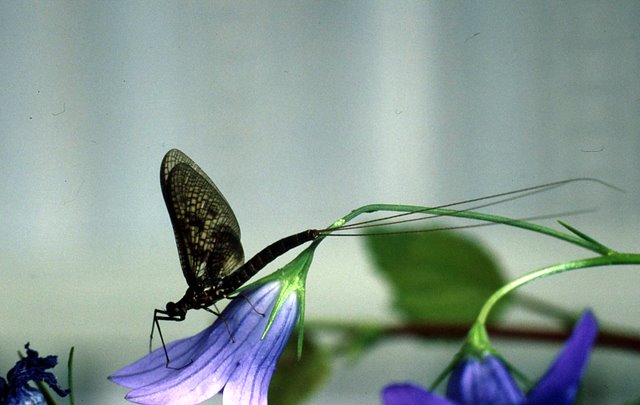
The hatching of the Brown Mayfly (Ephemera vulgata) is a much-awaited event, which usually happens around Midsummer. One day, nymphs by the thousands, suddenly rise to the surface and wiggle out of their shucks. Relieved, they rise and begin their graceful mating dance. You can almost hear the rustle of wings, as swarms of mayflies move in an age-old ritual about life and death.

A fisherman at a loss on the bank. Nymph, hatching mayfly, or an imitation of a fully developed Brown Mayfly? Yes, all three usually work, not least the nymph, which is easily forgotten when the mayfly sits on the water. The most common mayfly representation has a parachute hackle and burnt wings. It is pleasant to tie, but a bit brittle and often needs some nursing between casts.
This fly I prefer to use when the Brown Mayfly hatches. Tied on a streamer hook, the generous hackle gives it good floating capacity. Above all, it is a robust and durable fly, and if occasionally it takes a dip, a few air casts will give it new life. And yes, the fish love it!
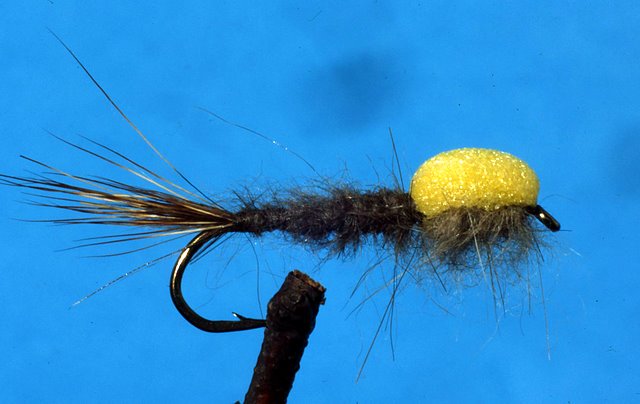
A critical moment in the hazardous life of a may fly is when, in the surface film, it struggles to get out of the nymph chuck. Ulf Pierrou, a fish biologist many years ago presented an imitation of a mayfly about to hatch. He gave it the homely name, “Pluppen”. It is equipped with a polycelon life jacket, and is supposed to depict the disarray of a surfacing nymph.
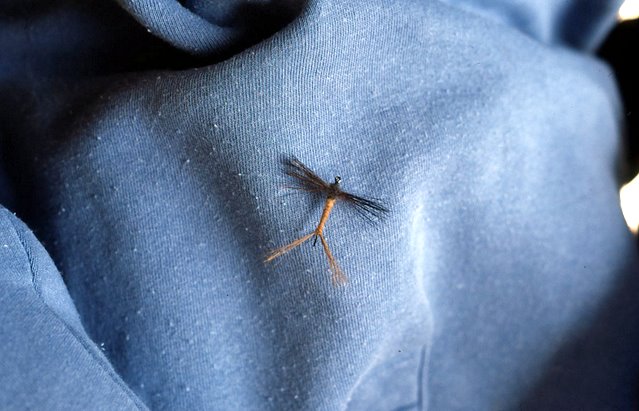
Following the mating ritual, the females are soon on the water again to drop their fertilized eggs. Their life cycle is thereby completed. Dying, they are stuck in the surface film, an easy prey for a cruising rainbow. In the picture, an excellent imitation of a “spent spinner” designed by Anders Forsling, artist and fly fisher. The material is dubbing and fox hair.
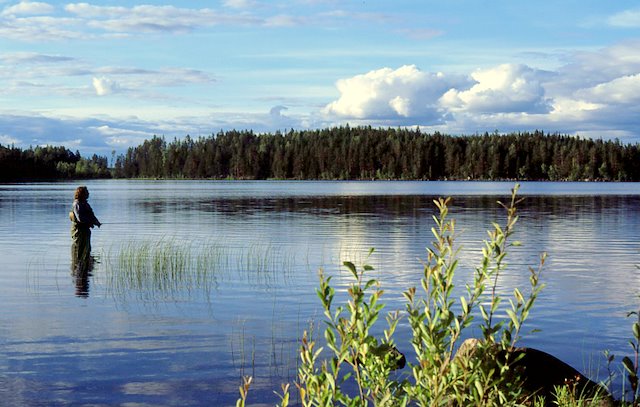
Summer cumuli clouds are gathering and warm winds sweep across the country. Waters reach bathing temperatures and rainbows become more reluctant to rise to a fly. How many fruitless hours have we spent looking out over placid water hoping to spot a sign of life? Few fish are rising and those that do are usually way out of reach. Or, as a friend of mine would say: “They might as well rise on the moon!”

During this time of the year one may hear the expression,” fished dry”, often said with a certain disdain. Nevertheless, in spite of good catches during the first half of the season, there are still plenty of fish in the water. When it comes to such famous fisheries as Hökensås, the problem is not any shortage of fish, but rather the fishermen’s lack of patience!
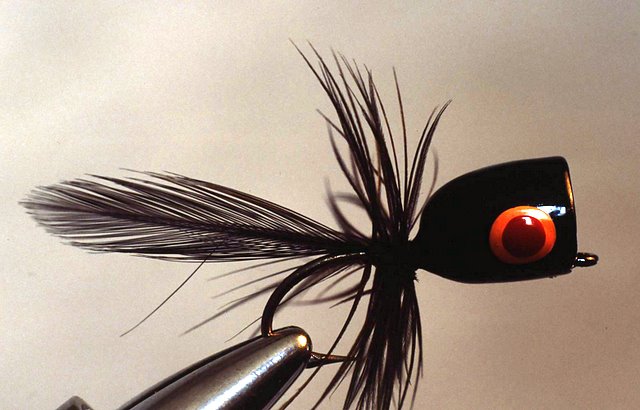
Using a popper with its combination of movement, sound and silhouette is sometimes the best way to bring those lethargic summer rainbows to the surface. As said before, rainbows are put into the water just to the purpose of fishing. Chalk stream rules don’t apply here. When the fish eventually rests in the creel, it is just as dead whether caught on a Blue Winged Olive or a popper made out of wood.
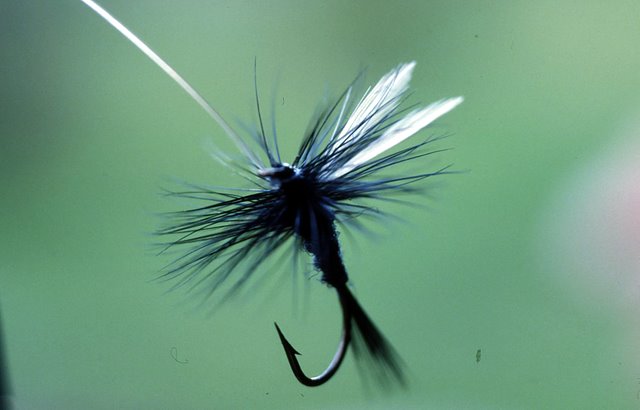
After years of fishing, naturally you tend to rely on certain flies. Of course, they don’t work on every occasion, but you believe in them, which is an ever so important factor. One of my favorites is Black Gnat, an all-round fly that represents all kinds of edibles that happens to land on the water.
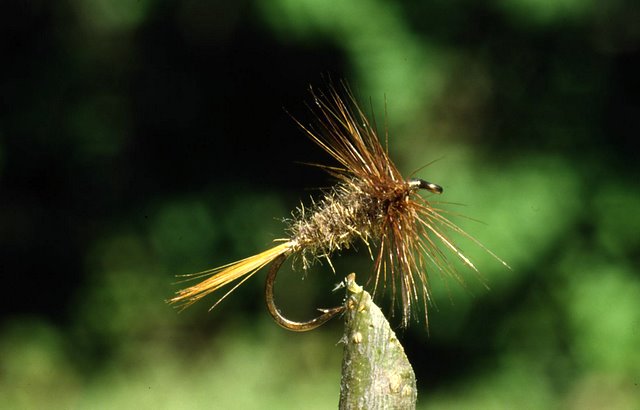
Tying exact imitations of all mayflies, which periodically turn up on our waters is a somewhat overbearing task, unless you find a special interest in trying to create perfect copies of the original. Ordinary hackled flies in different sizes and colors work well in most conditions.
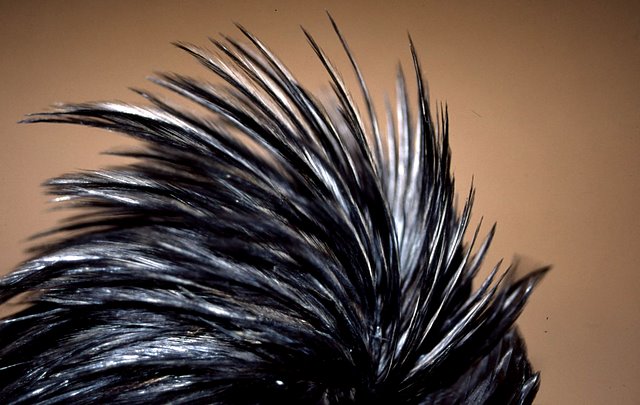
It is not necessary to use the most expensive cock hackle available. Where a stiff hackle fiber penetrates the water like the point of a spear, a softer fiber forms a “foot” that rests lightly and easily on the surface. Someone said that the only advantage of a quality hackle is that the fly is not apt to get stuck in grass and bushes. Right or wrong? Well, in any case a good subject for discussion while waiting for the evening rise.

An English speaking fly-fishing instructor held a comfortable and relaxed attitude when teaching his students. He believed in the KISS method (Keep It Simple, Stupid). A follower of the KISS method does not bother with details, but is content with a fly that has almost the same size as the original, almost the same silhouette and almost the same color. Probably most of us belong in this category.
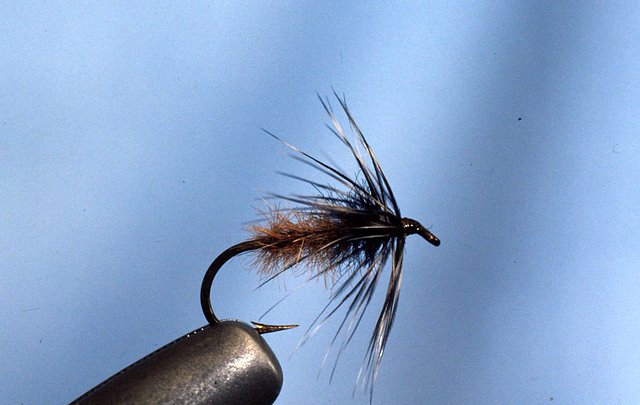
The Flymph is a good representative for various mayfly nymphs. Flymphs are soft-hackled flies, imitating the nymph stage of a mayfly, as well as spent spinners stuck in the surface film. A soft hen hackle gives the fly an illusion of life and makes it attractive to rainbows hunting close to the surface. Body material twined in a tying thread loop catches tiny air bubbles and gives the fly a silvery nuance. The men behind the Flymph are two Americans, James Leisenring and Pete Hidy.
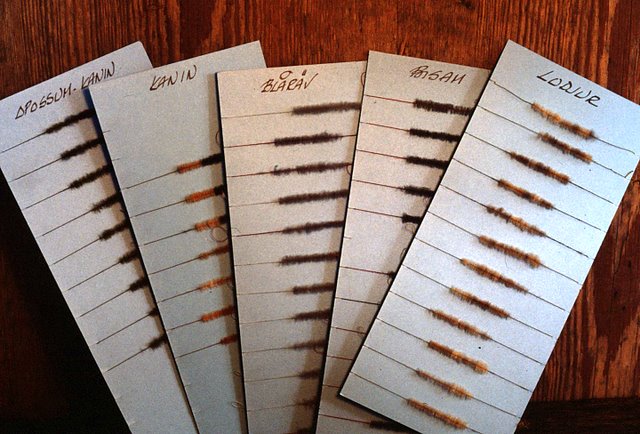
Diverse furs make up the body material of a flymph. Cut the material into small pieces and place it on top of an under-thread on a simple twining block. As the over-thread traps the fur pieces, twine the two threads together. After this procedure, fasten the finished product on cardboard for future use. For he who wants to read more, authors Johnson-Forsling have written an instructive book on the subject (in Swedish),”Flymfer och andra mjukhacklade flugor”.

Late summer, and the days are getting notably shorter. Veils of fog drift over the water at dawn, adding depth and mystique to the wilderness. An owl hooting from his perch on the ridge signals eventide. Time to collect the fishing gear and make your way to a road before dark. Alas, no fish this time, but it doesn’t really matter. A day at the lake means so much more than a heavy creel. And, by the way, there are more chances to come before the season is over.
Continued, RAINBOW TROUT 2
| Home | About Us | Vintjärn | Flies and Fishing | Friends |